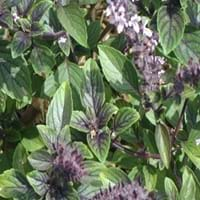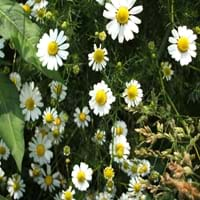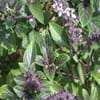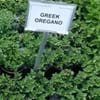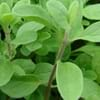Life Span
Perennial
Perennial
Origin
Hybrid origin
Europe, Western Asia, India
Types
Not available
Not Available
Habitat
gardens, Grassland, Hillside, meadows
Fields, meadows
USDA Hardiness Zone
9-11
Not Available
AHS Heat Zone
12-1
Not Available
Sunset Zone
A1, A2, A3, H1, H2, 1a, 1b, 2a, 2b, 3a, 3b, 4, 5, 6, 7, 8, 9, 10, 11, 12, 13, 14, 15, 16, 17, 18, 19, 20, 21, 22, 23, 24
1a, 1b, 2a, 2b, 3a, 3b, 4, 5, 6, 7, 8, 9, 10, 11, 12, 13, 14, 15, 16, 17, 18, 19, 20, 21, 22, 23, 24
Habit
Oval or Rounded
Upright/Erect
Flower Color
Pink, Lavender
White, Yellow
Flower Color Modifier
Bicolor
Bicolor
Fruit Color
Not Available
Not Available
Leaf Color in Spring
Purple
Green
Leaf Color in Summer
Green, Purple
Green
Leaf Color in Fall
Green, Purple
Green
Leaf Color in Winter
Light Green
Light Green
Leaf Shape
Ovate
bipinnate
Plant Season
Spring, Summer, Fall, Winter
Summer, Fall
Sunlight
Full Sun, Partial Sun
Full Sun
Type of Soil
Loam, Sand
Loam, Sand
The pH of Soil
Neutral
Acidic, Neutral
Soil Drainage
Well drained
Well drained
Bloom Time
Indeterminate
Early Summer, Summer, Late Summer, Early Fall
Tolerances
Drought
Drought
Where to Plant?
Ground
Container, Ground, Pot
How to Plant?
Stem Planting
Runners, Seedlings
Plant Maintenance
Medium
Medium
Watering Requirements
Requires regular watering
Allow soil to be completely dry in between waterings, Do Not over Water, Drought Tolerant, Requires regular watering
In Summer
Lots of watering
Lots of watering
In Spring
Moderate
Moderate
In Winter
Average Water
Average Water
Soil pH
Neutral
Acidic, Neutral
Soil Type
Loam, Sand
Loam, Sand
Soil Drainage Capacity
Well drained
Well drained
Sun Exposure
Full Sun, Partial Sun
Full Sun
Pruning
Cut or pinch the stems, Do not prune during shooting season, Prune regularly, Prune to stimulate growth, Remove dead leaves, Remove dead or diseased plant parts, Remove deadheads
Remove damaged leaves, Remove dead branches, Remove dead leaves
Fertilizers
All-Purpose Liquid Fertilizer
All-Purpose Liquid Fertilizer
Pests and Diseases
Red blotch
Pest Free
Plant Tolerance
Drought
Drought
Flower Petal Number
Single
Single
Fragrant Bark/Stem
Yes
Yes
Foliage Texture
Coarse
Fine
Foliage Sheen
Glossy
Matte
Attracts
Bees
Bees, Beetles, Butterflies, Flies
Allergy
no allergic reactions
Anaphylaxis, Asthma, conjunctivitis, Rhinitis
Aesthetic Uses
Not Used For Aesthetic Purpose
Not Used For Aesthetic Purpose
Beauty Benefits
Not Available
Not Available
Environmental Uses
Air purification
Air purification
Medicinal Uses
constipation, Diarrhea, Headache, Kidney problems, Stomach pain
Antispasmodic, bowel syndrome, Sedative, Stomachic
Part of Plant Used
Whole plant
Flowers, Herb
Other Uses
Used As Food, Used as Ornamental plant, Used for fragrance
Can be made into a herbal tea, Used in herbal medicines
Used As Indoor Plant
No
No
Used As Outdoor Plant
Yes
Yes
Garden Design
Container, Edible, Herb / Vegetable, Mixed Border
Cutflower, Herb / Vegetable, Mixed Border
Botanical Name
OCIMUM 'African Blue'
MATRICARIA recutita
Common Name
African Blue Basil, Hybrid Basil
German Chamomile, Scented Mayweed
In Hindi
अफ्रीकी ब्लू तुलसी
जर्मन कैमोमाइल
In German
African Blue Basilikum
Echte Kamille
In French
Bleu basilic africaine
Matricaria recutita
In Spanish
Albahaca azul africana
Matricaria recutita
In Greek
Αφρικής Μπλε βασιλικό
γερμανικό χαμομήλι
In Portuguese
Africano manjericão azul
Camomila vulgar
In Polish
Afrykański Niebieski bazylią
Rumianek pospolity
In Latin
अफ्रीकी ब्लू तुलसी
Matricaria chamomilla
Phylum
Not Available
Anthophyta
Class
Magnoliopsida
Magnoliopsida
Family
Lamiaceae
Asteraceae
Clade
Basal Tricolpates
Not Available
Tribe
Not Available
Anthemideae
Subfamily
Not Available
Not Available
Number of Species
Not Available
Not Available
Importance of African Blue Basil and German Chamomile
Want to have the most appropriate plant for your garden? You might want to know the importance of African Blue Basil and German Chamomile. Basically, these two plants vary in many aspects. Compare African Blue Basil and German Chamomile as they differ in many characteristics such as their life, care, benefits, facts, etc. Every gardener must at least have the slightest clue about the plants he wants to plant in his garden. Compare their benefits, which differ in many ways like facts and uses. The medicinal use of African Blue Basil is constipation, Diarrhea, Headache, Kidney problems and Stomach pain whereas of German Chamomile is Antispasmodic, bowel syndrome, Sedative and Stomachic. African Blue Basil has beauty benefits as follows: Not Available while German Chamomile has beauty benefits as follows: Not Available.
Compare Facts of African Blue Basil vs German Chamomile
How to choose the best garden plant for your garden depending upon its facts? Here garden plant comparison will help you to solve this query. Compare the facts of African Blue Basil vs German Chamomile and know which one to choose. As garden plants have benefits and other uses, allergy is also a major drawback of plants for some people. Allergic reactions of African Blue Basil are no allergic reactions whereas of German Chamomile have Anaphylaxis, Asthma, conjunctivitis and Rhinitis respectively. Having a fruit bearing plant in your garden can be a plus point of your garden. African Blue Basil has no showy fruits and German Chamomile has no showy fruits. Also African Blue Basil is not flowering and German Chamomile is not flowering . You can compare African Blue Basil and German Chamomile facts and facts of other plants too.
